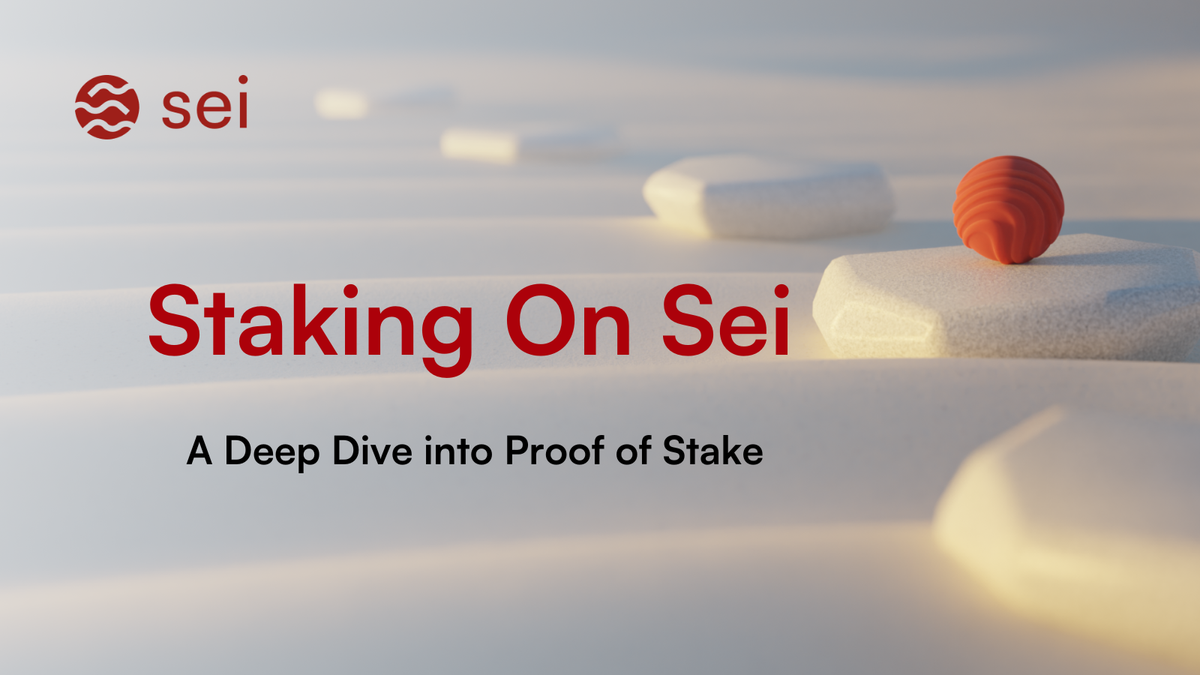Staking on Sei: What is it?

In the dynamic world of digital assets, staking has emerged as a common term for those involved in the crypto ecosystem. But what does staking mean, especially in the context of Sei, a state-of-the-art Layer 1 blockchain?
What Is Staking?
Staking can be visualized as securing the operation of a “proof of stake” blockchain, such as Sei. This commitment helps maintain the network's integrity and functionality. In return, stakers are compensated for their role.
How Does Staking Work on Sei?
Every blockchain requires a mechanism to ensure transactions and balances are accurate and fair, creating a “trust-less” and decentralized system; this is called “consensus”. On Sei, as with other Proof of Stake blockchains, validators play a crucial role. They help validate and secure new transactions, maintaining the integrity of the system. In return, the network acknowledges their contribution via Sei token rewards, ensuring the system remains trustworthy and economically viable to operate.
Staking Rewards
As part of Sei’s decentralized proof of stake mechanism, validators around the world are responsible for securing the Sei blockchain and ensuring its accuracy. Validators run programs called full nodes which allow them to verify each transaction made on the Sei network. Validators propose blocks, vote on their validity, and add each new block to the chain.
Users can stake their Sei to validators and receive staking rewards, while validators themselves can set a fee to be compensated for their important role via commission. Higher commission means that the validator takes a larger percentage of staking rewards.
Crucially - validators never have control over or access to your staked tokens. However, if a validator misbehaves, they can incur economic penalties known as “slashing” which will result in some of the Sei tokens staked to them being burned.
How to Stake on Sei?
Staking on Sei is straightforward:
1) Acquire SEI tokens.
2) If you haven't already, transfer them to a digital wallet that supports Sei staking, such as Compass or Fin.
3) Visit app.sei.io and select a validator to show support to by staking with them. This decision is yours to make based on factors such as validator commission, uptime and their communication.
4) Over time, observe your contribution to the network's security and stability.
Always prioritize the security of your digital wallet by keeping your seedphrase safe, and staying updated with Sei's developments.
Closing Thoughts
As the digital landscape evolves, staking on blockchains like Sei offers an opportunity to be an active participant in the blockchain revolution. It's not just about holding tokens; it's about actively contributing to and ensuring the security of a groundbreaking blockchain. For newcomers, understanding foundational concepts like staking is crucial. The crypto realm might seem vast, but with a focus on platforms like Sei and a grasp of core principles, anyone can navigate this exciting frontier.
Disclaimer: This article is for informational purposes only and should not be construed as financial advice. Always conduct your own research and consult with a professional before making any decisions.
About Sei Labs
Sei Labs is a contributor to the open-source Sei blockchain, the fastest Layer 1 for trading. Sei's unique chain-level optimizations enable decentralized exchanges and trading apps to offer the best user experience with modern performance and scalability. The Sei Labs team is composed of industry veterans from Goldman Sachs, Databricks, Robinhood, Google, and Nvidia.
